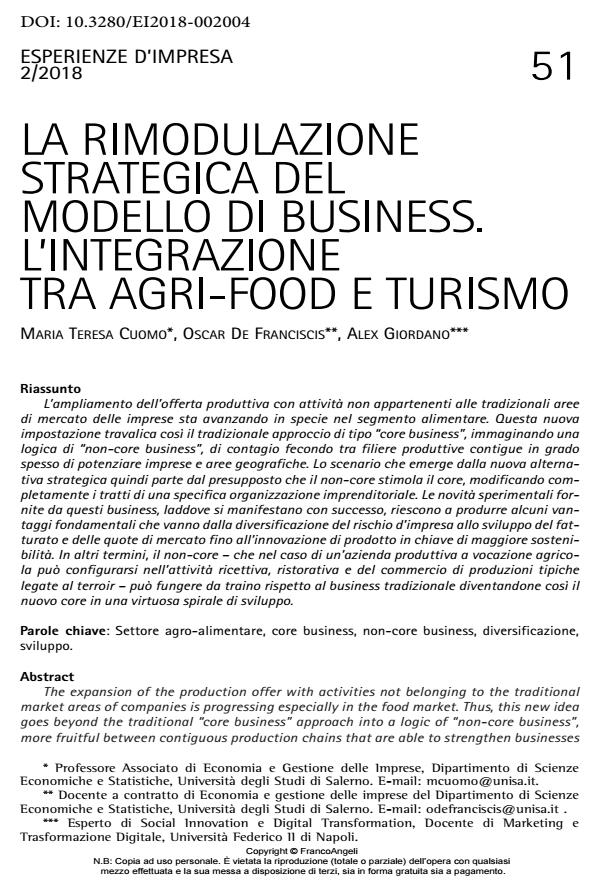La rimodulazione strategica del modello di business. L’integrazione tra agri-food e turismo
Journal title ESPERIENZE D'IMPRESA
Author/s Maria Teresa Cuomo, Oscar De Franciscis, Alex Giordano
Publishing Year 2021 Issue 2018/2
Language Italian Pages 17 P. 51-67 File size 367 KB
DOI 10.3280/EI2018-002004
DOI is like a bar code for intellectual property: to have more infomation
click here
Below, you can see the article first page
If you want to buy this article in PDF format, you can do it, following the instructions to buy download credits

FrancoAngeli is member of Publishers International Linking Association, Inc (PILA), a not-for-profit association which run the CrossRef service enabling links to and from online scholarly content.
The expansion of the production offer with activities not belonging to the traditional market areas of companies is progressing especially in the food market. Thus, this new idea goes beyond the traditional "core business" approach into a logic of "non-core business", more fruitful between contiguous production chains that are able to strengthen businesses and geographic areas as well. The scenario emerging from the new strategic alternative therefore starts from the assumption that the non-core stimulates the core, completely modifying the traits of a specific business organization. These innovative businesses manage to produce some fundamental advantages that range from the diversification of business risk to the development of turnover and market shares up to product innovation in terms of greater sustainability. In other words, the non-core - which in the case of a production company with an agricultural vocation can take the form of accommodation, catering and trade in typical products linked to the terroir - can act as a driving force with respect to the traditional business thus becoming its new core in a virtuous spiral of development.
Keywords: Agri-food sector, core business, non-core business, diversification, opportunities.
Maria Teresa Cuomo, Oscar De Franciscis, Alex Giordano, La rimodulazione strategica del modello di business. L’integrazione tra agri-food e turismo in "ESPERIENZE D'IMPRESA" 2/2018, pp 51-67, DOI: 10.3280/EI2018-002004